
Belanakan (Blanakan) Ming Jiajing Shipwreck
On May 5, 2010, The Jakarta Post reported the recovery of over 12,400 Chinese ceramic items from a shipwreck located approximately 50 kilometers from Belanakan in Subang, West Java. These artifacts are believed to date back to the Ming Dynasty. The ship, measuring about 50 meters in length and 20 meters in width, lies at a depth of 58 meters in the Java Sea. The recovered cargo consists of blue-and-white ceramics, including plates, bowls, jars, and vases, with around 40% of the items in good condition.
 |
| Location of Belanakan wreck |
Aji Sularso, Director General for Surveillance and Control at the Maritime
Affairs and Fisheries Ministry, stated:
"Given the large size of the
cargo, we predict that we need to dive for a year to secure all of its precious
loads, which may amount to one million pieces—larger than the number of items
secured from the Cirebon shipwreck. It is predicted to be a cargo ship that sank
in the 1600s. Archaeologists believe, from the blue motifs on the white
ceramics, that they originate from the Ming Dynasty."
Although reports on the total number of ceramics vary, some estimates suggest at least 350,000 pieces. Notably, fragments from the wreck, including broken jars with bird and floral motifs, have surfaced in Jakarta's antique markets.
 |
| Belanakan Wreck blue and white jar, featuring bird in lotus pond. Found in an antique shop in Jakarta. |
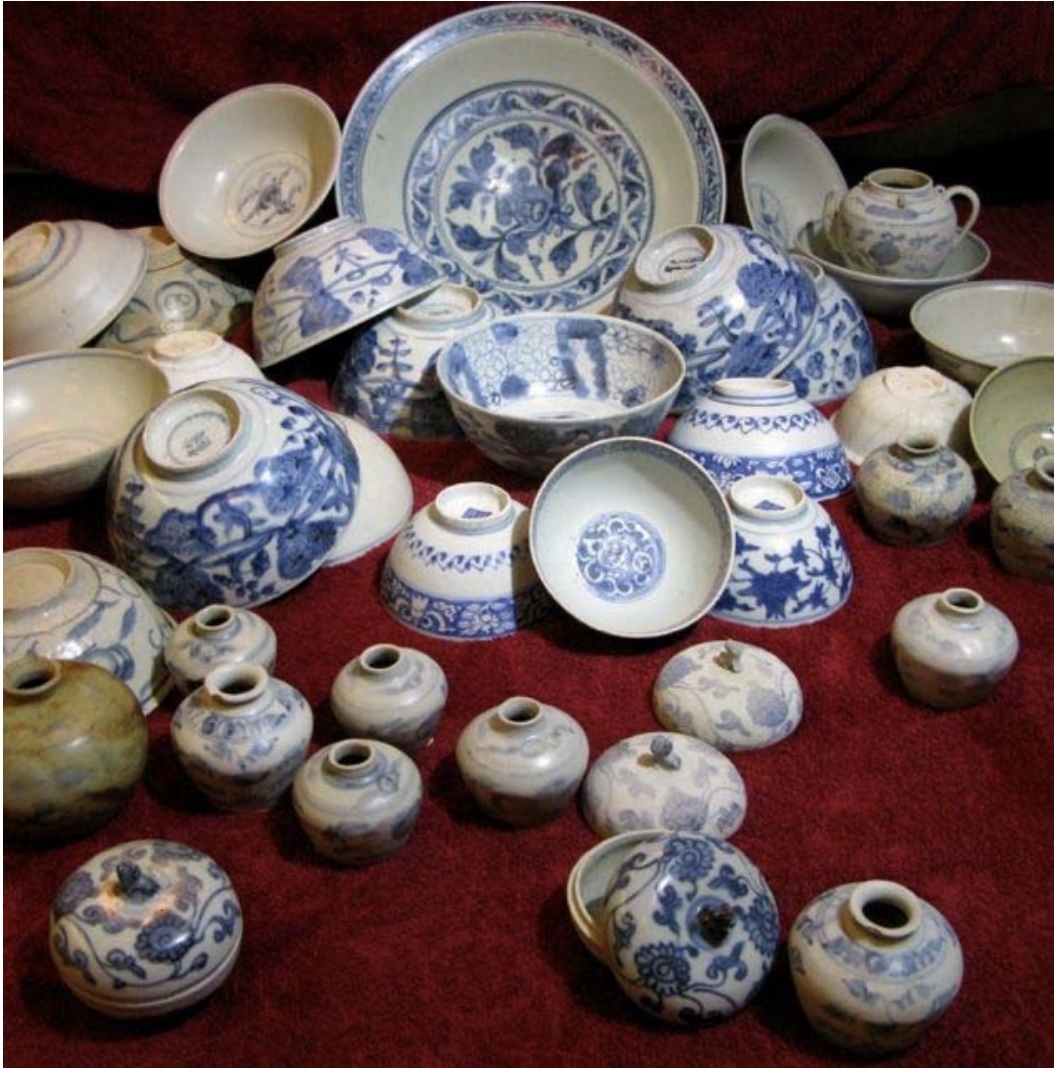



 |
|
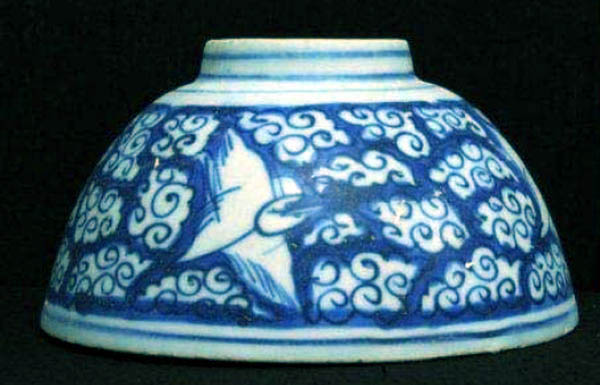 |
|
 |
|
|
|
|
|
Blue and white wares from the Belanakan wreck |
|
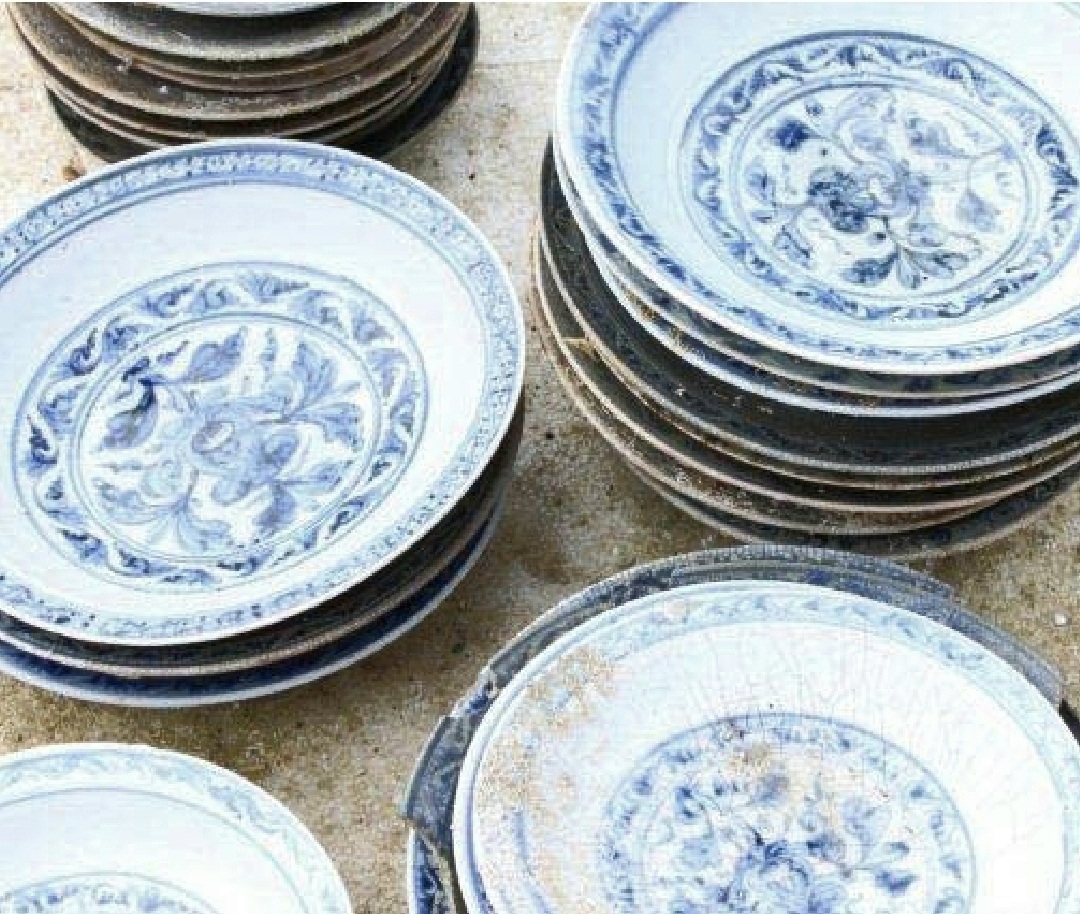 |
|
|
Zhangzhou blue and white big plates from Belanakan wreck with motif executed in calligraphic style
|
|
.jpg) |
|
| Zhangzhou jarlet with calligraghic stylised floral decoration (Right Bottom ) | |
The dating of the Belanakan wreck can be refined by examining stylistic and comparative evidence from other shipwrecks, particularly the Ko Kradat wreck (southeastern Thailand), salvaged between 1978 and 1980. The Ko Kradat cargo consisted primarily of Thai iron-black painted wares, brown-glazed jars and jarlets, and some Chinese blue-and-white ceramics.
Studies of related shipwrecks, such as the Xuande, Phu Quoc 1, and Singtai wrecks, suggest a production timeframe of 1530–1560 A.D. for the Sawankhalok iron-brown painted wares. Among the Zhangzhou blue-and-white fragments recovered from Ko Kradat, one bears a Jiajing mark on its base, indicating that the wreck dates to the Jiajing period (1522–1566) or later.
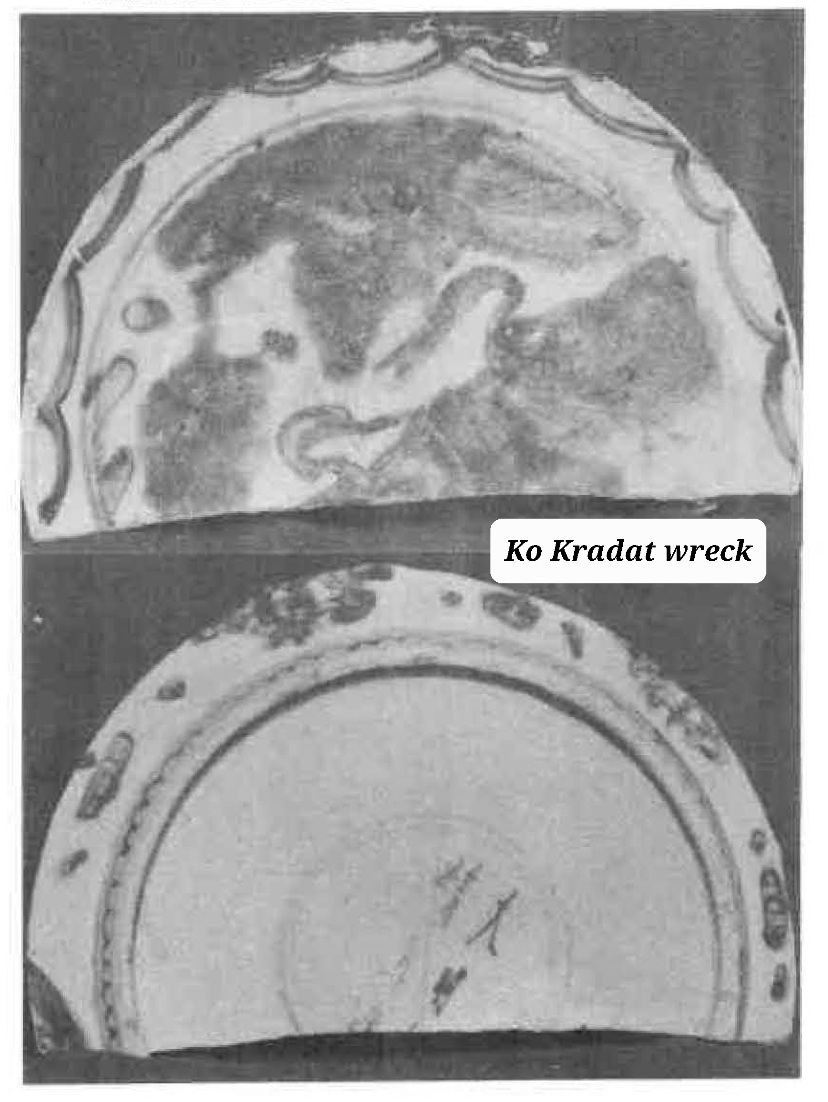 |
| Fragment with the Made in Ming Jiajing Mark |
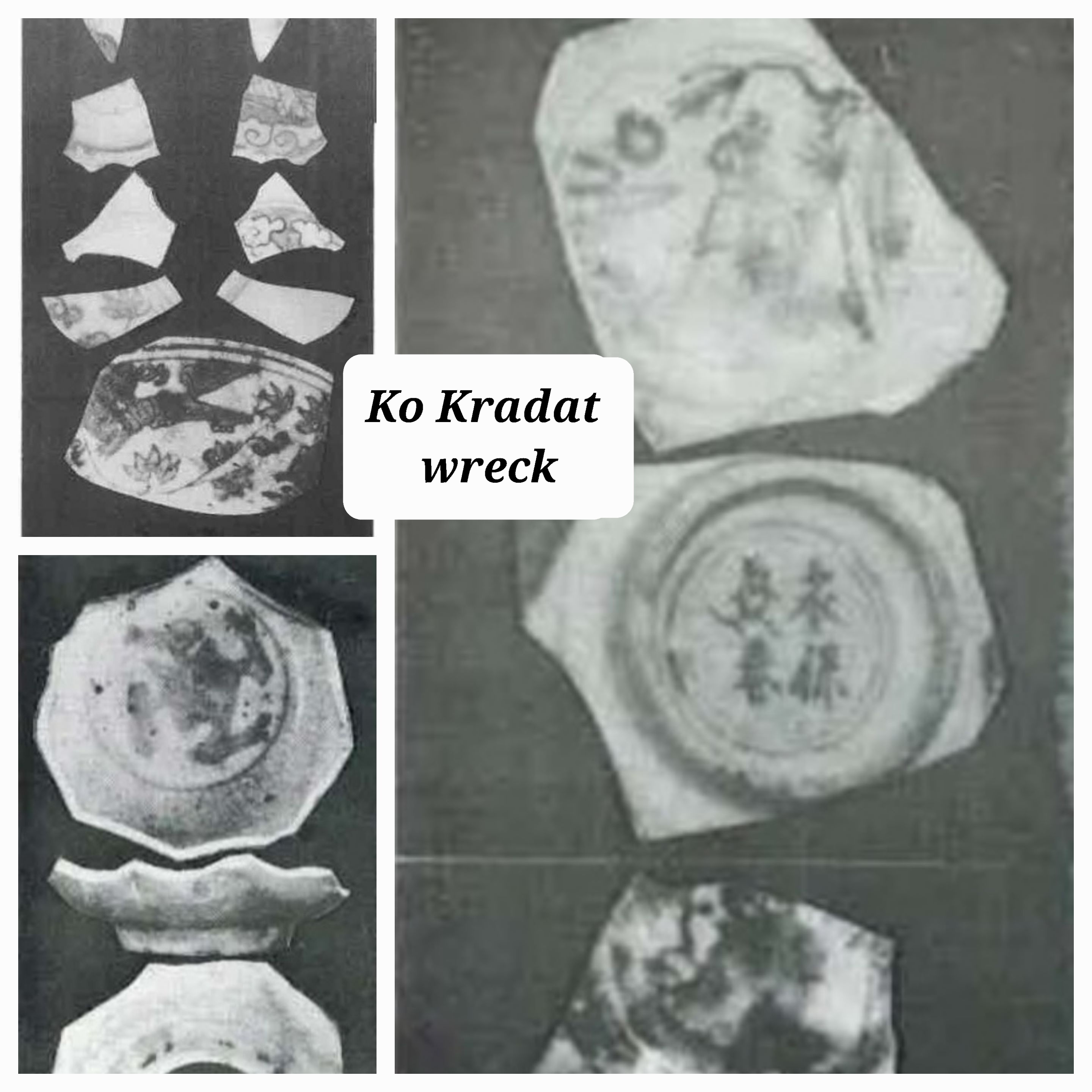 |
| Some Ming blue and white fragments from Ko Kradat wreck |
Additionally, a bowl fragment featuring grapevine decoration on the interior and a pine tree motif on the exterior was mistakenly identified in the Ko Kradat report as Sawankhalok ware. Interestingly, similar bowls were salvaged from the Blanakan and Nanao 1 wrecks in Indonesia. The stylistic similarities between the Ko Kradat and Blanakan fragments are significant, whereas those from Nanao 1 appear more sketchily drawn and less refined.
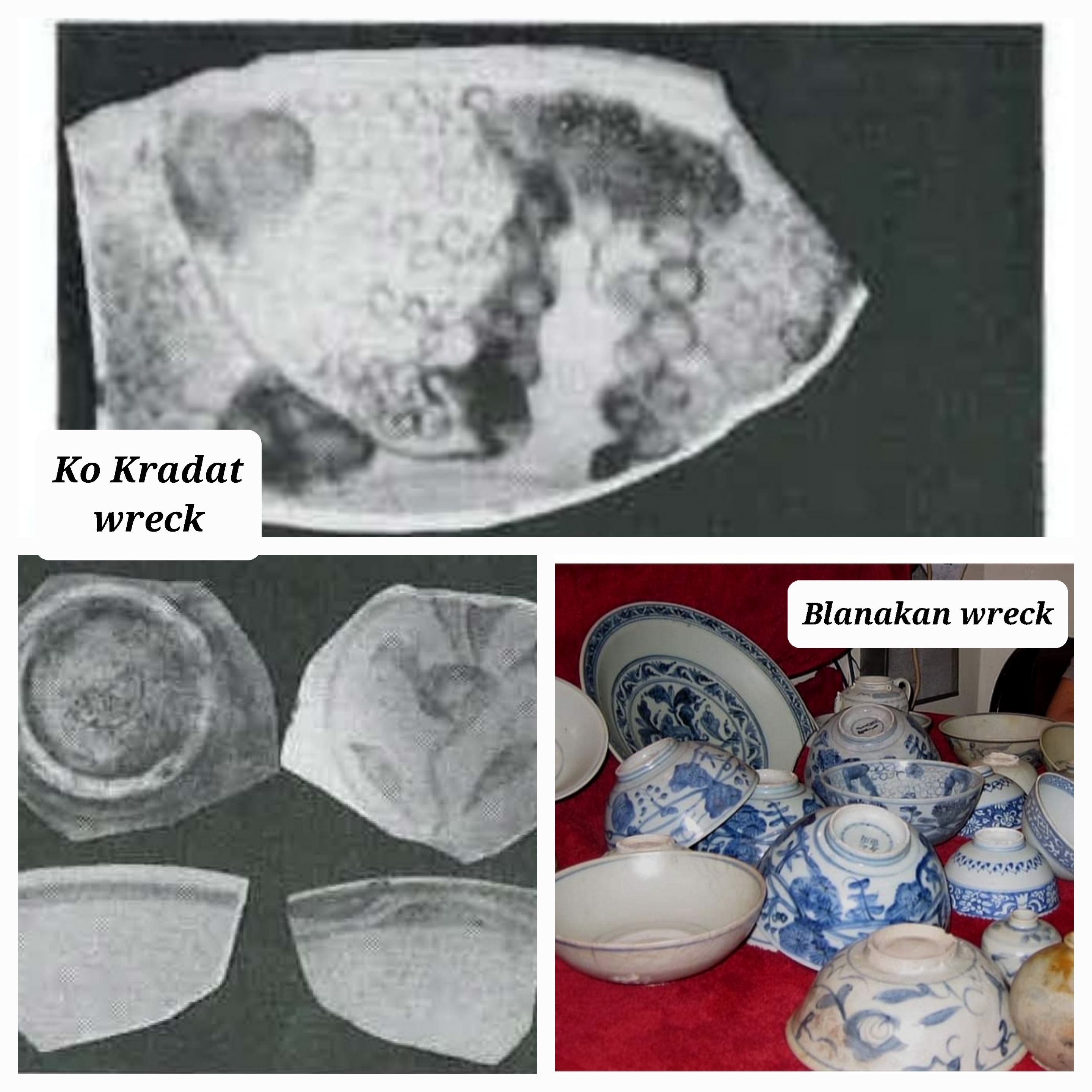 |
| Two Zhangzhou fragments from Ko Kradat (Bottom Left). Stylistically similar to that of a bowl from the Blanakan wreck (Bottom right). The Jingdezhen bowls with grapes/vines design are also stylistically similar. |
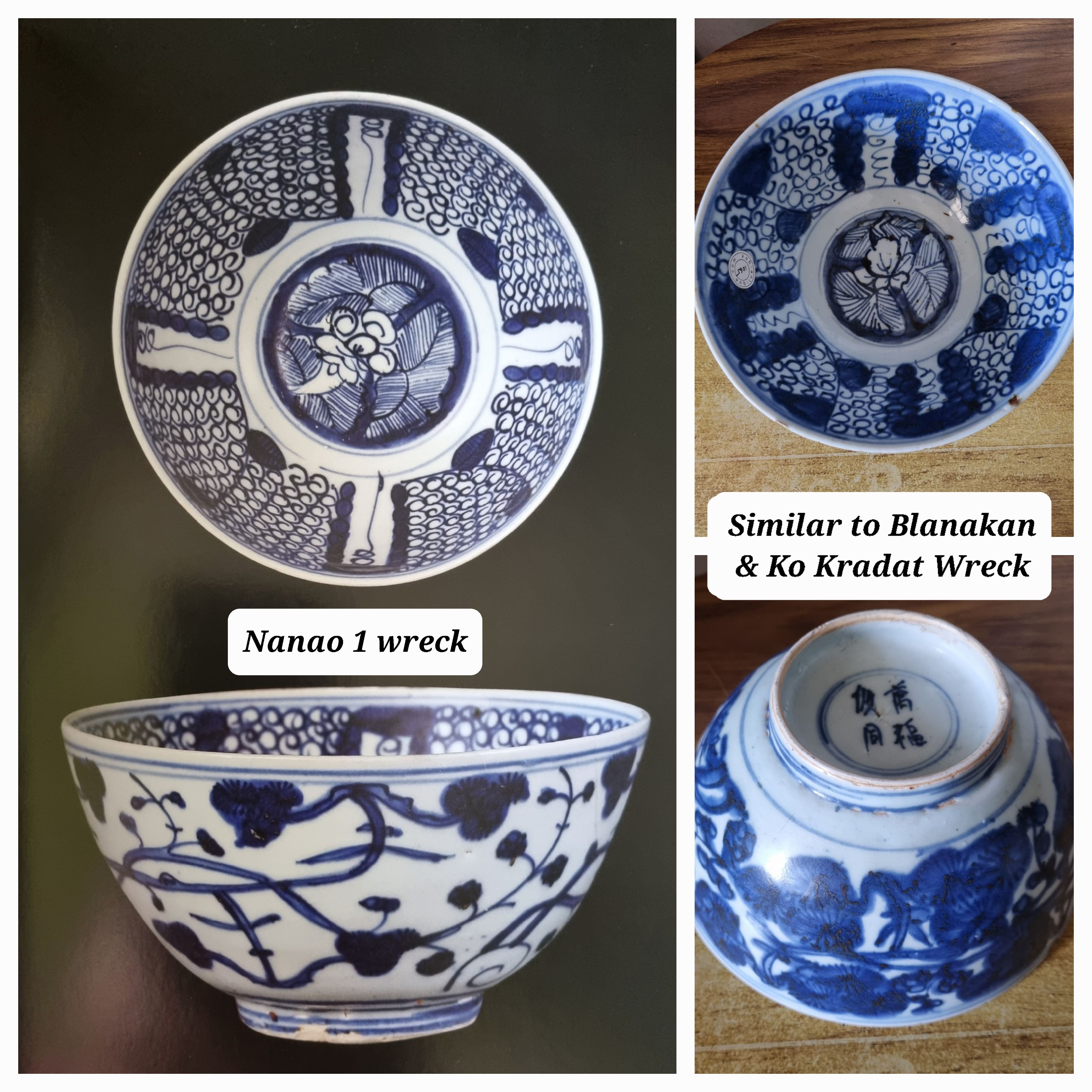 |
| Jingdezhen bowls of grapes/vine design from Nanao 1 wreck is more sketchy as compared to those form Blanakan and Ko Kradat Wrecks. |
The blue-and-white ceramics from Belanakan also show strong stylistic parallels with those from the San Sebastian wreck (Mozambique, 1554 A.D.).
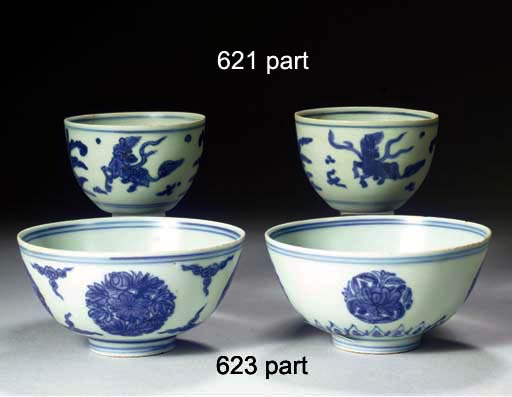 |
|
|
Examples from San Sebastian wreck |
|
Further comparative analysis comes from the Nanao 1 wreck, which provides additional chronological context. In 2019, the Shanghai Museum conducted thermoluminescence (TL) testing on two Jingdezhen blue-and-white samples from Nanao 1. The results indicated a date range of 490±40 and 498±50 years, corresponding to 1569–1571 A.D. (3rd to 5th year of the Longqing reign, 1567–1572). The Nanao 1 ceramics appear more poorly painted compared to those from Belanakan, suggesting that the Nanao 1 wreck postdates Belanakan.
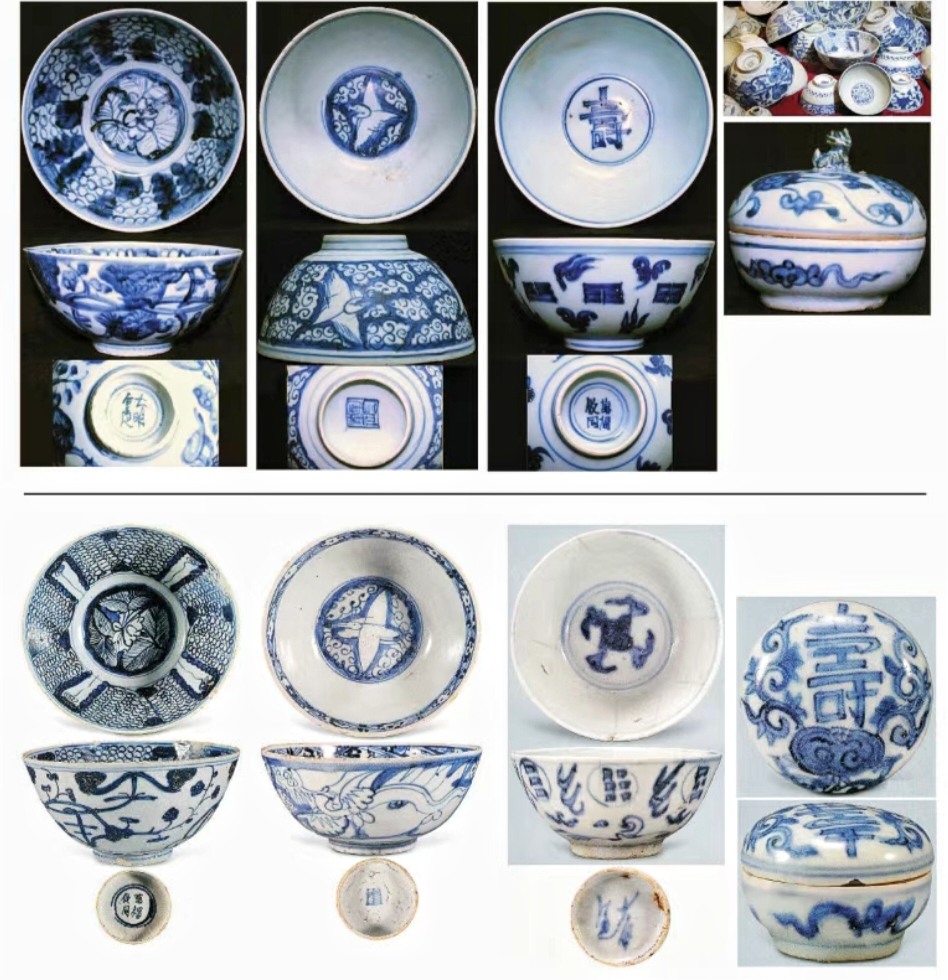 |
| Top: Blanakan Wreck Bottom: Nanao 1 Wreck. Those from Blanankan wreck have generally better drawn decoration. |
Considering all these factors, this study proposes a late Jiajing period dating for the Belanakan wreck (circa 1550s–1560s).
The Belanakan wreck is an important reference for dating late Jiajing-period Jingdezhen blue-and-white ceramics. It also contained early Fujian Zhangzhou (Swatow) blue-and-white ceramics, painted in a calligraphic style. This provides key insights into the stylistic evolution of Zhangzhou blue-and-white wares and their role in Southeast Asian trade.
The Belanakan wreck represents a significant find that enhances our understanding of 16th-century maritime trade and ceramic production. Through stylistic comparisons with wrecks such as Ko Kradat and Nanao 1, this study supports a late Jiajing period (circa 1550s–1560s) dating for the ship. The ceramics recovered provide valuable insights into Jingdezhen and Zhangzhou blue-and-white wares and their distribution across Southeast Asia, Africa, and beyond.
Further research and preservation efforts will continue to refine our knowledge of this historically significant shipwreck.
Written by: NK Koh (October 28, 2013)
Updated: March 19, 2020, 27 Feb 2025